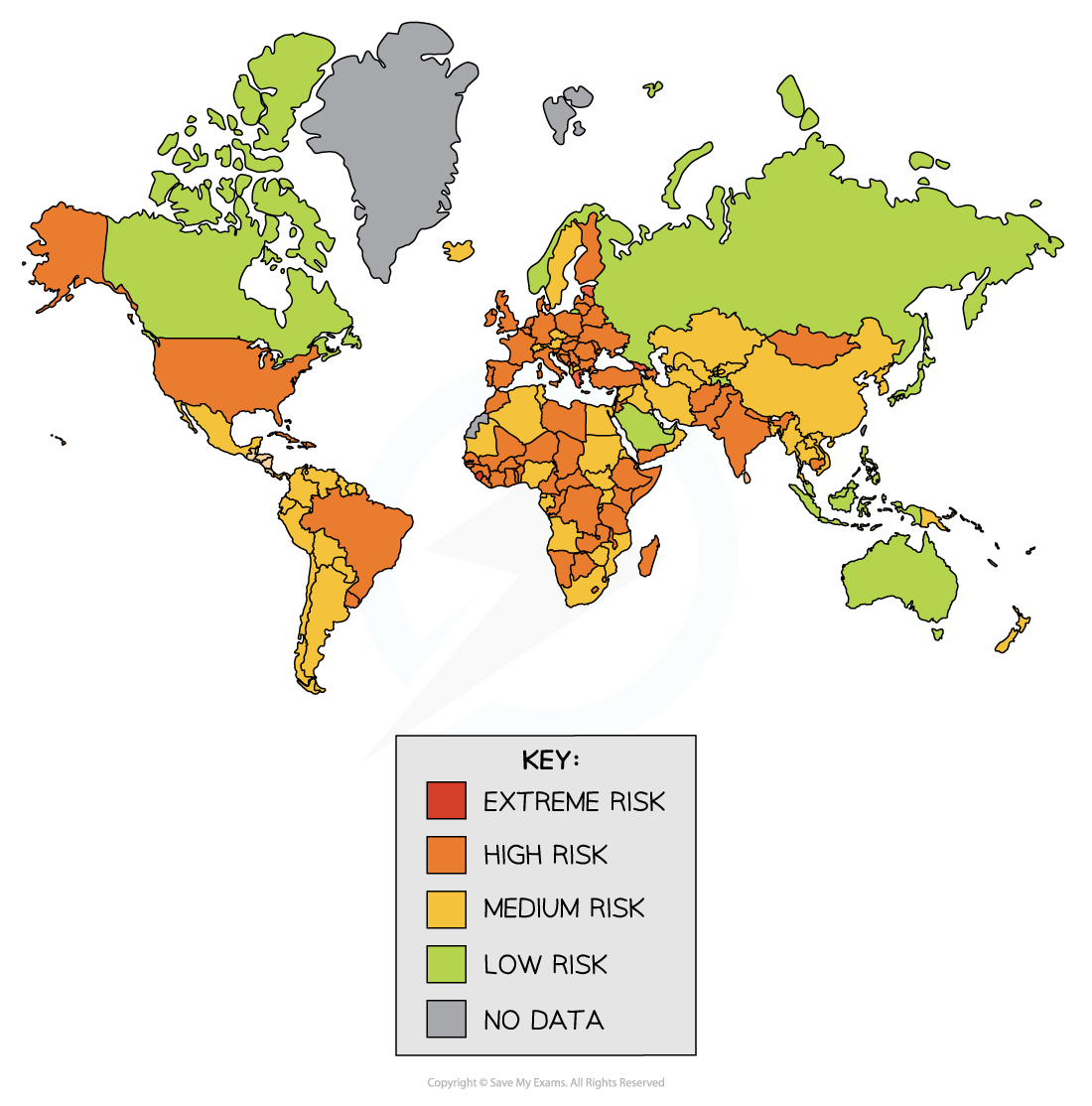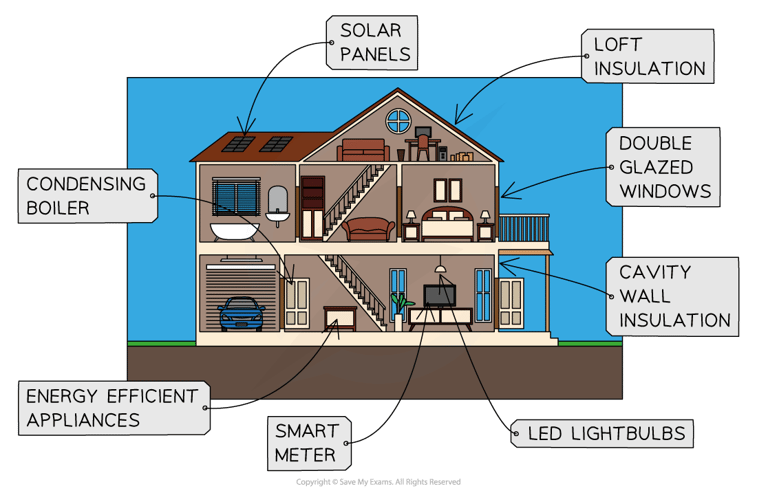Global Distribution of Energy
- Global energy demand has rapidly increased
- Population growth, economic development and technology are the three main causes of the increase in energy demand
Population growth
- The global population reached 8 billion in 2022
- Population growth leads to an increased demand for food, goods and technology all of which increase the need for energy
- Most population growth has been in LICs and NEEs where there are already issues with energy insecurity
Economic development
- The more developed a country is the higher the demand for energy
- The higher demand for food leads to more intensive farming which requires more energy for machines, light and heat
- Increasing industry requires energy for heating, lighting and machinery this increase in demand is seen particularly in NEEs
- There is more transport and car ownership all of which requires energy in the form of petrol, diesel or electricity
- Urbanisation increases with the development increasing domestic appliances, heating, lighting
- Increased wealth means people buy more appliances and technology which require energy
Technology
- Technology has led to a greater number of appliances which use energy both in industry and domestic use
- Countries with the highest energy consumption per person tend to be HICs and include Canada, Norway and Saudi Arabia
- Countries with the lowest energy consumption per person are LICs including Niger, Chad and Tanzania

Energy use per person 2020
- Energy sources are not evenly distributed across the world
- Some areas produce very little energy due to a lack of natural resources or they do not have the money to exploit the resources
- Fossil fuels are the main energy sources
- The main producers of fossil fuels for primary energy are:
- USA
- Canada
- Norway
- Russia
- Australia
- Middle East
- The world's largest producers are often the largest consumers of energy
- An energy gap is when a country cannot meet the demand for energy using its own resources
- When countries have an energy gap, they have to import energy to meet the demand
- Having an energy gap means that a country is not energy secure
- To be energy secure a country needs an:
- Uninterrupted supply of energy
- Affordable supply
- Accessible supply

Energy security risk level
- The UK has a widening energy gap and is not energy secure because:
- Renewable energy is not as efficient and so cannot replace full energy from fossil fuels
- It is cheaper to import fossil fuels than it is to exploit the resources in the UK
- The commitment of many countries to tackling climate change and reducing the use of fossil fuels has increased energy insecurity in many countries
- Energy insecurity is experienced by HICs, NEEs and LICs
- Often in HICs it is because the demand for energy is so high
Factors affecting supply
- Physical factors
- Geology: affects whether energy sources (coal, oil and gas) are available
- Climate: extreme heat or cold can impact on machinery used and transport. It can also affect sunshine hours and wind for solar and wind energy production
- Location: some oil and gas reserves are under the sea bed, and reaching them can be challenging, some areas of tectonic activity are suitable for geothermal energy
- Water supply: areas with plentiful water supply and valleys are suitable for hydro-electric power
- Cost of exploitation
- The economic viability of an energy source is whether the cost of exploiting the energy source is less than the money it will make. This can fluctuate depending on energy prices and demand
- Some forms are energy are more expensive than others: coal is relatively cheap whereas nuclear is expensive
- The cost of renewables is decreasing as technologies develop
- Wages are included in costs this can make exploiting the reserve unprofitable for example in coal in the UK
- Technology
- New technological developments mean that additional reserves of energy can be exploited
- Technology has helped to improve the efficiency and cost of renewable energy, there are also developments in energy storage
- New energy sources are being developed such as hydraulic fracturing or fracking to extract shale gas and hydrogen energy

Fracking
- Political factors
- Conflict can be caused between countries regarding energy reserves and who has the right to exploit them
- Flows of energy from one country to others can be interrupted due to conflict: supplies of oil from Libya have been affected by civil war since 2011, and supplies of gas have been affected by the invasion of Ukraine by Russia
- HICs promote positive relationships with countries who are major suppliers of energy to ensure the supply is maintained
- Government subsidies for renewable energy sources may increase the supply from these sources
Worked example
Study Figure 1, a map showing world oil consumption in 2016

What is the difference between Africa and North America's share of world oil consumption shown in figure 1?
[1 mark]
Answer:
- 20% / 6 times greater / 500% more [1]




